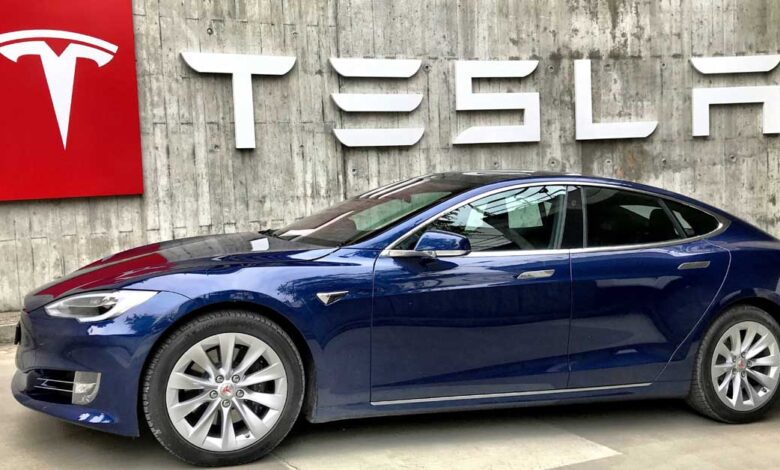Tesla Robotaxi: Pioneering Transportation with Self-Driving Dream Cars

Tesla Robotaxi, a Pioneering Transportation with Self-Driving Dream Cars Elon Musk, the visionary CEO of Tesla, has once again set the tech world abuzz with his recent announcement. Tesla Robotaxi, a groundbreaking self-driving car, is set to hit the streets in August. Let’s dive into the details of this exciting development.
Table of Contents
What Is Tesla Robotaxi?
Tesla’s Robotaxi is not your typical autonomous vehicle. It’s not just a car; it’s a comprehensive transportation service. Here’s what you need to know:
- Autonomous Driving: The Robotaxi is equipped with Tesla’s advanced Autopilot technology, allowing it to navigate roads, detect obstacles, and make real-time decisions—all without human intervention.
- Ride-Sharing Revolution: Imagine a fleet of self-driving cars available for ride-sharing. With the Robotaxi app, users can summon a car, hop in, and be chauffeured to their destination. No driver required.
- Electric and Eco-Friendly: Like all Tesla vehicles, the Robotaxi is electric, contributing to cleaner air and reduced greenhouse gas emissions. It’s a step toward a more sustainable future.
How Does It Work?
- Autopilot Technology: Tesla Robotaxi relies on the company’s advanced Autopilot technology. This system combines data from cameras, radar, ultrasonic sensors, and GPS to navigate roads, detect obstacles, and make real-time decisions.
- Full Self-Driving (FSD) Capability: The Robotaxi fleet will be equipped with Tesla’s Full Self-Driving (FSD) hardware. FSD enables features like automatic lane changes, traffic-aware cruise control, and self-parking. Over-the-air software updates continually enhance these capabilities.
- Machine Learning and Neural Networks: Tesla’s fleet of vehicles collects data from millions of miles driven by human drivers and uses it to train neural networks. These networks learn from real-world scenarios, improving the car’s decision-making abilities.
- Safety Measures: Safety is paramount. Tesla Robotaxi system includes redundant sensors, fail-safes, and constant monitoring. If a critical issue arises, the car can safely pull over or stop.
Benefits of Tesla Robotaxi
- Cost-Effective: Ride-sharing services powered by Robotaxis are expected to be more affordable than traditional taxis. No driver means lower labor costs.
- Reduced Traffic Congestion: Imagine fewer cars on the road. Robotaxis could significantly reduce traffic, making urban commuting smoother.
- Accessibility: Robotaxis can serve people who can’t drive due to age, disability, or other reasons. It’s a step toward inclusive mobility.
Challenges Ahead
- Regulatory Hurdles: Self-driving cars face regulatory challenges. Governments need to establish guidelines for safety, liability, and insurance.
- Public Perception: Convincing the public to trust self-driving cars remains a hurdle. High-profile accidents have fueled skepticism.
The Roadmap
As Tesla unveils its Robotaxi service, we’re witnessing a pivotal moment in transportation history. The future promises a fleet of silent, efficient, and eco-friendly vehicles navigating our streets. Whether you’re a tech enthusiast, an investor, or simply curious, keep an eye on Tesla’s Robotaxi—it’s driving us toward a new era of mobility.
You Might Also Like To Read
Elon Musk’s X Achieves Blue Check Verification, Revered and Venerated.
FAQ’s
What makes Tesla Robotaxi different from other self-driving cars?
Tesla’s Robotaxi stands out due to its comprehensive approach. It’s not just a self-driving car; it’s an entire ride-sharing service. Unlike traditional taxis, Robotaxis operate without human drivers. Passengers can summon a Robotaxi through an app, hop in, and enjoy the ride. The integration of Tesla’s advanced Autopilot technology and Full Self-Driving (FSD) capability sets it apart.
How safe are Tesla Robotaxis?
Safety is a top priority. Tesla employs redundant sensors, fail-safes, and constant monitoring to ensure passenger safety. If any critical issue arises, the Robotaxi can safely pull over or stop. Additionally, Tesla’s neural network continuously learns from real-world scenarios, improving decision-making abilities. While challenges remain, Tesla is committed to making self-driving technology as safe as possible.




